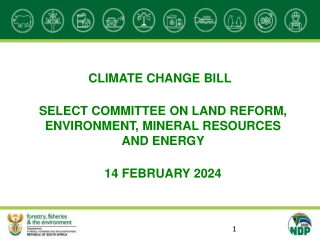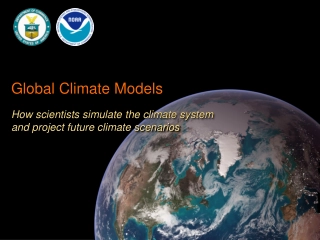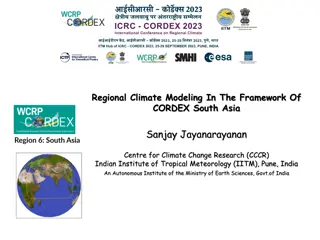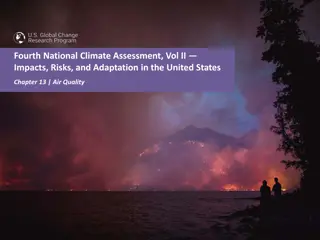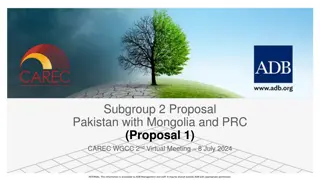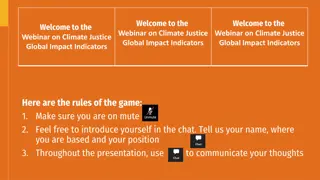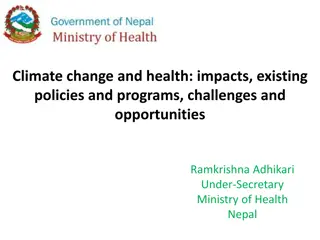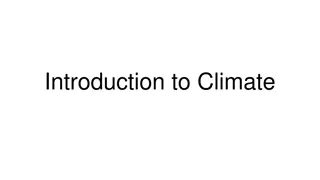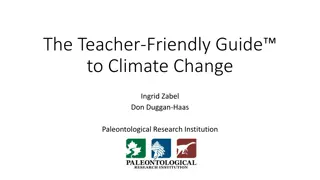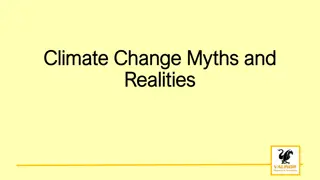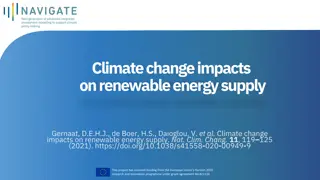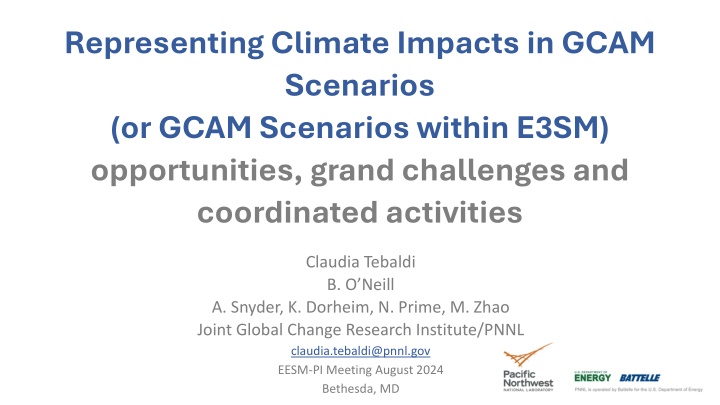
Representing Climate Impacts in GCAM Scenarios
Opportunities, grand challenges, and coordinated activities in coupling an Earth system model to a multisector dynamics model, exploring impact models in hydrology, agriculture, human health, and energy systems. Addressing challenges in modeling impact scales, frequencies, types, and uncertainties while discussing opportunities for including labor productivity, wildfires, sea level rise, and non-climate impacts in scenario planning.
Download Presentation

Please find below an Image/Link to download the presentation.
The content on the website is provided AS IS for your information and personal use only. It may not be sold, licensed, or shared on other websites without obtaining consent from the author. If you encounter any issues during the download, it is possible that the publisher has removed the file from their server.
You are allowed to download the files provided on this website for personal or commercial use, subject to the condition that they are used lawfully. All files are the property of their respective owners.
The content on the website is provided AS IS for your information and personal use only. It may not be sold, licensed, or shared on other websites without obtaining consent from the author.
E N D
Presentation Transcript
Representing Climate Impacts in GCAM Scenarios (or GCAM Scenarios within E3SM) opportunities, grand challenges and coordinated activities Claudia Tebaldi B. O Neill A. Snyder, K. Dorheim, N. Prime, M. Zhao Joint Global Change Research Institute/PNNL claudia.tebaldi@pnnl.gov EESM-PI Meeting August 2024 Bethesda, MD
Coupling an Earth system model to a multisector dynamics model We take the perspective of GCAM modelers And we are concerned with this component How to best represent the Earth system in a model like GCAM? Note that some of these thoughts should be also relevant to the ESM modelers thinking about hardwiring GCAM to E3SM
Impact models (hydrology, agriculture, human health energy system) Runoff, Agricultural Productivity, CDD/HDD, Climate variables driving impacts GCAM Climate System model Emissions, Land Use
Easy part thanks to emulators: Hector, STITCHES Hard Part Impact models (hydrology, agriculture, human health energy system) Runoff, Agricultural Productivity, CDD/HDD, Climate variables driving impacts GCAM Climate System model Emissions, Land Use
The hard part (Challenges) Which impacts should we model? At which scale (GCAM works by regions, impacts happen at local scales)? At which frequency? (how do high frequency impacts manifest themselves in a 5-year time step (current GCAM frequency)? In a 1-year time step?) What type of impact models? Process-based? Empirical? Damage functions? How do we account for uncertainties?
Opportunities We have started from a set of impacts for which previous modeling work provided a template for implementation. We plan to continue adding impacts: Labor productivity (ongoing) Wildfires More impacts linked to extremes (damages from natural disasters) Sea level rise Non-climate impacts are impacts too! E.g., air pollution. We plan to shorten the time step of GCAM (from 5 year to 1 year) to better represent short term disturbances (extremes) We also plan to revisit all this with the macro implementation (GDP becomes endogenous) Based on our initial scenarios, endogenous GDP, which itself is indirectly affected by physical impacts, will be potentially affected at a scale that may produce global effects.
Coordinated activities Use a hierarchy of models, from emulators to process models, to model hazards and impacts and represent them into GCAM at the right spatial and temporal scale. The same applies to representing impacts within E3SM and GCAM coupled system. Damages from extremes; sea level rise climate induced migration impacts of climate on land-based mitigation solutions (afforestation, CDR, ocean carbon sinks) From scenarios to storylines and back: how do we represent uncertainties when the modeling system becomes more and more complex? Can we use storylines instead of full-blown exploratory modeling? Can we connect the former to the latter?
Thank you claudia.tebaldi@pnnl.gov This research was supported by the U.S. Department of Energy, Office of Science, as part of research in MultiSectorDynamics, Earth and Environmental System Modeling Program. The Pacific Northwest National Laboratory is operated for DOE by Battelle Memorial Institute under contract DE-AC05-76RL01830. The views and opinions expressed in this paper are those of the authors alone.
Hard Coupling (hard-wiring model within model) or Soft Coupling (give inputs/take outputs to/from a model run offline)? When feedbacks leave afootprint at the global scale, altering the trajectory of a scenario from its reference case (without climate impacts), full integration, hard coupling, should be implemented. When feedbacks are not as large to influence the trajectory of global temperature/GHG emissions soft coupling should suffice. In this case, we are still interested in regional and distributional impacts, changes in trade patterns, food availability, food prices, food security, other measures of well being that only an integrated model can represent, but that integration does not need to be step by step.



